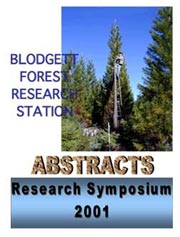
The objective of the sugar pine blister rust program is to identify forms of resistance that will have long-term effectiveness against the white pine blister rust fungus (Cronartium ribicola) in sufficient individuals to preserve sugar pine’s genetic diversity.
The method of assessing resistance has been crafted largely through the work of Dr. Brohun Kinloch, PSW, and three events: 1) identification of a form of resistance (Major Gene Resistance, a.k.a. MGR) that is easily identified by needle symptoms and is conferred by a single dominant gene; 2) recognition that MGR resistance can be overcome by a virulent race of blister rust; 3) realization that the Happy Camp Outplant Site where the virulent race first occurred is ideal for testing MGR-resistant sugar pine seedlings for additional forms of resistance collectively known as slow rusting resistance (SR).
Seedlings of candidate trees are screened for MGR at the Placerville Nursery. A preliminary goal of 20 resistant trees per 500 ft elevation band per seed zone, set to preserve adaptation to current and future environmental challenges, has been reached for many middle elevations in the Central Sierra. Planting MGR progeny at Happy Camp has allowed individuals with both MGR and SR to be identified and grafted into seed orchards and clone banks. A new method for identifying heritable SR in young seedlings is being tested, and may prove more useful than current methods for candidates from northern California where MGR is rare. Given that MGR seed is now available, a new challenge will be to promote planting of MGR seedlings of this "Queen of the Sierras", possibly using silvicultural methods beyond traditional reforestation prescriptions.
|


